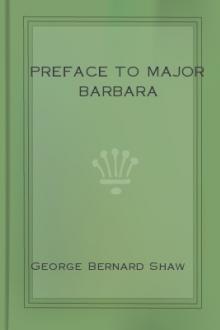The Fifteen Decisive Battles of the World from Marathon to Waterloo, Edward Creasy [simple e reader TXT] 📗

- Author: Edward Creasy
- Performer: -
Book online «The Fifteen Decisive Battles of the World from Marathon to Waterloo, Edward Creasy [simple e reader TXT] 📗». Author Edward Creasy
“In sooth, the estate of France was then most miserable. There appeared nothing but a horrible face, confusion, poverty, desolation, solitarinesse, and feare. The lean and bare labourers in the country did terrifie even theeves themselves, who had nothing left them to spoile but the carkasses of these poore miserable creatures, wandering up and down like ghostes drawne out of their graves. The least farmes and hamlets were fortified by these robbers, English, Bourguegnons, and French, every one striving to do his worst; all men-of-war were well agreed to spoile the countryman and merchant. EVEN THE CATTELL, ACCUSTOMED TO THE LARUME BELL, THE SIGNE OF THE ENEMY’S APPROACH, WOULD RUN HOME OF THEMSELVES WITHOUT ANY GUIDE BY THIS ACCUSTOMED
MISERY.” [De Serres, quoted in the notes to Southey’s Joan of Arc.]
In the autumn of 1428, the English, who were already masters of all France north of the Loire, prepared their forces for the conquest of the southern provinces, which yet adhered to the cause of the Dauphin. The city of Orleans, on the banks of that river, was looked upon as the last stronghold of the French national party. If the English could once obtain possession of it, their victorious progress through the residue of the kingdom seemed free from any serious obstacle. Accordingly, the Earl of Salisbury, one of the bravest and most experienced of the English generals, who had been trained under Henry V., marched to the attack of the all-important city; and, after reducing several places of inferior consequence in the neighbourhood, appeared with his army before its walls on the 12th of October, 1428.
The city of Orleans itself was on the north side of the Loire, but its suburbs extended far on the southern side, and a strong bridge connected them with the town. A fortification which in modern military phrase would be termed a tete-du-pont, defended the bridge-head on the southern side, and two towers, called the Tourelles, were built on the bridge itself, where it rested on an island at a little distance from the tete-du-pont. Indeed, the solid masonry of the bridge terminated at the Tourelles; and the communication thence with the tete-du-pont on the southern shore was by means of a drawbridge. The Tourelles and the tete-du-pont formed together a strong fortified post, capable of containing a garrison of considerable strength; and so long as this was in possession of the Orleannais, they could communicate freely with the southern provinces, the inhabitants of which, like the Orleannais themselves, supported the cause of their Dauphin against the foreigners. Lord Salisbury rightly judged the capture of the Tourelles to be the most material step towards the reduction of the city itself. Accordingly he directed his principal operations against this post, and after some severe repulses, he carried the Tourelles by storm, on the 23d of October. The French, however, broke down the part of the bridge which was nearest to the north bank and thus rendered a direct assault from the Tourelles upon the city impossible. But the possession of this post enabled the English to distress the town greatly by a battery of cannon which they planted there, and which commanded some of the principal streets.
It has been observed by Hume, that this is the first siege in which any important use appears to have been made of artillery.
And even at Orleans both besiegers and besieged seem to have employed their cannons more as instruments of destruction against their enemy’s men, than as engines of demolition against their enemy’s walls and works. The efficacy of cannon in breaching solid masonry was taught Europe by the Turks, a few years after wards, at the memorable siege of Constantinople. In our French wars, as in the wars of the classic nations, famine was looked on as the surest weapon to compel the submission of a well-walled town and the great object of the besiegers was to effect a complete circumvallation. The great ambit of the walls of Orleans, and the facilities which the river gave for obtaining succour and supplies, rendered the capture of the place by this process a matter of great difficulty. Nevertheless, Lord Salisbury, and Lord Suffolk, who succeeded him in command of the English after his death by a cannon-ball, carried on the necessary works with great skill and resolution. Six strongly fortified posts, called bastillos, were formed at certain intervals round the town and the purpose of the English engineers was to draw strong lines between them. During the winter little progress was made with the entrenchments, but when the spring of 1429 came, the English resumed their works with activity; the communications between the city and the country became more difficult, and the approach of want began already to be felt in Orleans.
The besieging force also fared hardly for stores and provisions, until relieved by the effects of a brilliant victory which Sir John Fastolfe, one of the best English generals, gained at Rouvrai, near Orleans, a few days after Ash Wednesday, 1429.
With only sixteen hundred fighting men, Sir John completely defeated an army of French and Scots, four thousand strong, which had been collected for the purpose of aiding the Orleannais, and harassing the besiegers. After this encounter, which seemed decisively to confirm the superiority of the English in battle over their adversaries, Fastolfe escorted large supplies of stores and food to Suffolk’s camp, and the spirits of the English rose to the highest pitch at the prospect of the speedy capture of the city before them, and the consequent subjection of all France beneath their arms.
The Orleannais now in their distress offered to surrender the city into the hands of the Duke of Burgundy, who, though the ally of the English, was yet one of their native princes. The Regent Bedford refused these terms, and the speedy submission of the city to the English seemed inevitable. The Dauphin Charles, who was now at Chinon with his remnant of a court, despaired of maintaining any longer the struggle for his crown; and was only prevented from abandoning the country by the more masculine spirits of his mistress and his queen. Yet neither they, nor the boldest of Charles’s captains, could have shown him where to find resources for prolonging the war; and least of all could any human skill have predicted the quarter whence rescue was to come to Orleans and to France.
In the village of Domremy, on the borders of Lorraine, there was a poor peasant of the name of Jacques d’Arc, respected in his station of life, and who had reared a family in virtuous habits and in the practice of the strictest devotion. His eldest daughter was named by her parents Jeannette, but she was called Jeanne by the French, which was Latinised into Johanna, and anglicised into Joan. [“Respondit quod in partibus suis vocabatur Johanneta, et postquam venit in Franciam vocata est Johanna.”—PROCES DE JEANNE D’ARC, vol i. p. 46.]
At the time when Joan first attracted attention, she was about eighteen years of age. She was naturally of a susceptible disposition, which diligent attention to the legends of saints, and tales of fairies, aided by the dreamy loneliness of her life while tending her father’s flocks, had made peculiarly prone to enthusiastic fervour. At the same time she was eminent for piety and purity of soul, and for her compassionate gentleness to the sick and the distressed.
[Southey, in one of the speeches which he puts in the mouth of his Joan of Arc, has made her beautifully describe the effect; on her mind of the scenery in which she dwelt:-
“Here in solitude and peace
My soul was nurst, amid the loveliest scenes Of-unpolluted nature. Sweet it was, As the white mists of morning roll’d away, To see the mountain’s wooded heights appear Dark in the early dawn, and mark its slope With gorse-flowers glowing, as the rising sun On the golden ripeness pour’d a deepening light. Pleasant at noon beside the vocal brook To lay me down, and watch the the floating clouds, And shape to Fancy’s wild similitudes Their ever-varying forms; and oh, how sweet, To drive my flock at evening to the fold, And hasten to our little hut, and hear The voice of kindness bid me welcome home!”The only foundation for the story told by the Burgundian partisan Monstrelet, and adopted by Hume, of Joan having been brought up as servant at an inn, is the circumstance of her having been once, with the rest of her family, obliged to take refuge in an AUBERGE in Neufchateau for fifteen days, when a party of Burgundian cavalry made an incursion into Domremy. (See the Quarterly Review, No. 138.)]
The district where she dwelt had escaped comparatively free from the ravages of war, but the approach of roving bands of Burgundian or English troops frequently spread terror through Domremy. Once the village had been plundered by some of these marauders, and Joan and her family had been driven from their home, and forced to seek refuge for a time at Neufchateau. The peasantry in Domremy were principally attached to the House of Orleans and the Dauphin; and all the miseries which France endured, were there imputed to the Burgundian faction and their allies, the English, who were seeking to enslave unhappy France.
Thus from infancy to girlhood Joan had heard continually of the woes of the war, and she had herself witnessed some of the wretchedness that it caused. A feeling of intense patriotism grew in her with her growth. The deliverance of France from the English was the subject of her reveries by day and her dreams by night. Blended with these aspirations were recollections of the miraculous interpositions of Heaven in favour of the oppressed, which she had learned from the legends of her Church. Her faith was undoubting; her prayers were fervent. “She feared no danger, for she felt no sin;” and at length she believed herself to have received the supernatural inspiration which, she sought.
According to her own narrative, delivered by her to her merciless inquisitors in the time of her captivity and approaching death, she was about thirteen years old when her revelations commenced.
Her own words describe them best: [Proces de Jeanne d’Arc, vol. i. p. 52.] “At the age of thirteen, a voice from God came near to her to help her in ruling herself, and that voice came to her about the hour of noon, in summer time, while she was in her father’s garden. And she had fasted the day before. And she heard the voice on her right, in the direction of the church; and when she heard the voice she also saw a bright light.
Afterwards, St. Michael and St. Margaret and St. Catherine appeared to her. They were always in a halo of glory; she could see that their heads were crowned with jewels: and she heard their voices, which were sweet and mild. She did not distinguish their arms or limbs. She heard them more frequently than she saw them; and the usual time when she heard them was when the church bells were sounding for prayer. And if she was in the woods when she heard them, she could plainly distinguish their voices drawing near to her. When





Comments (0)